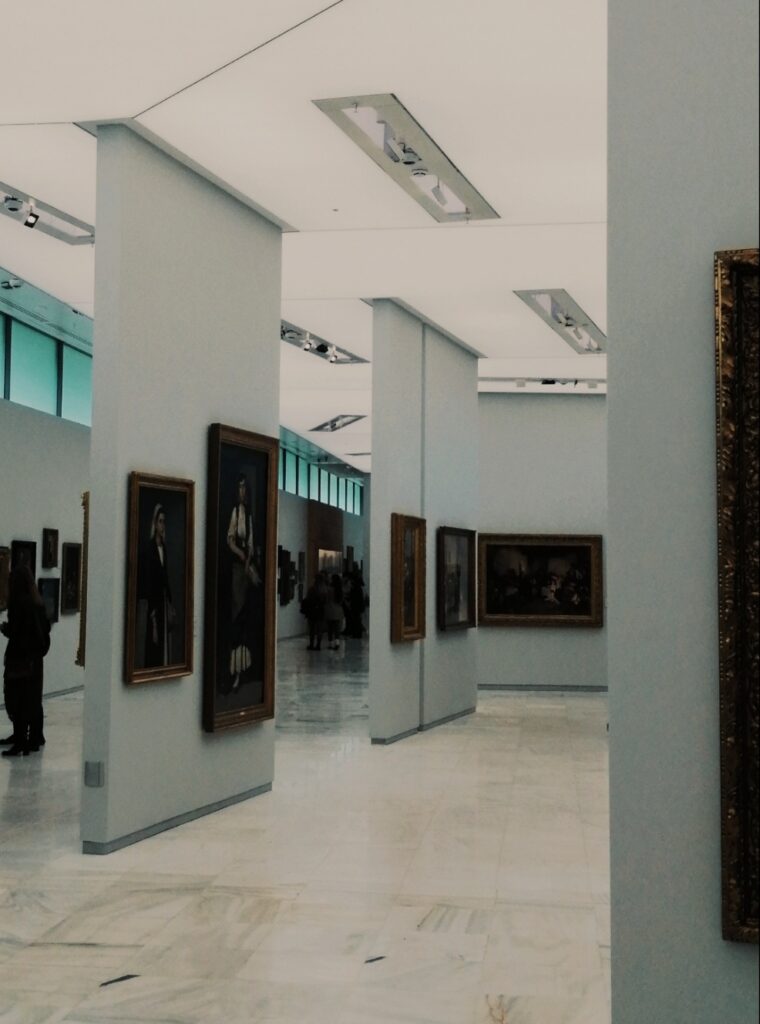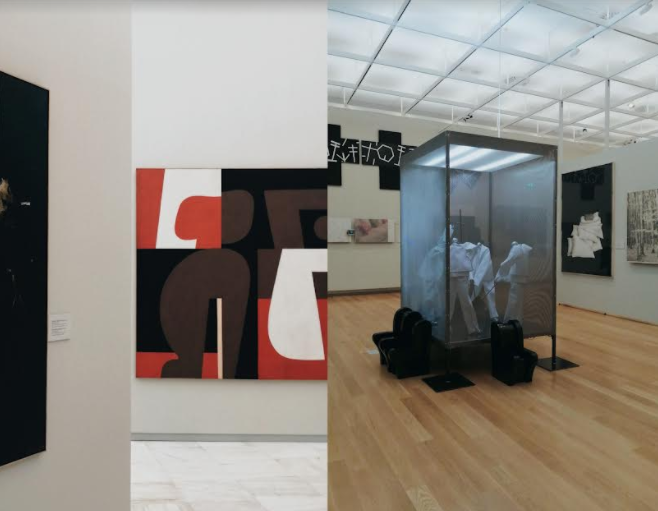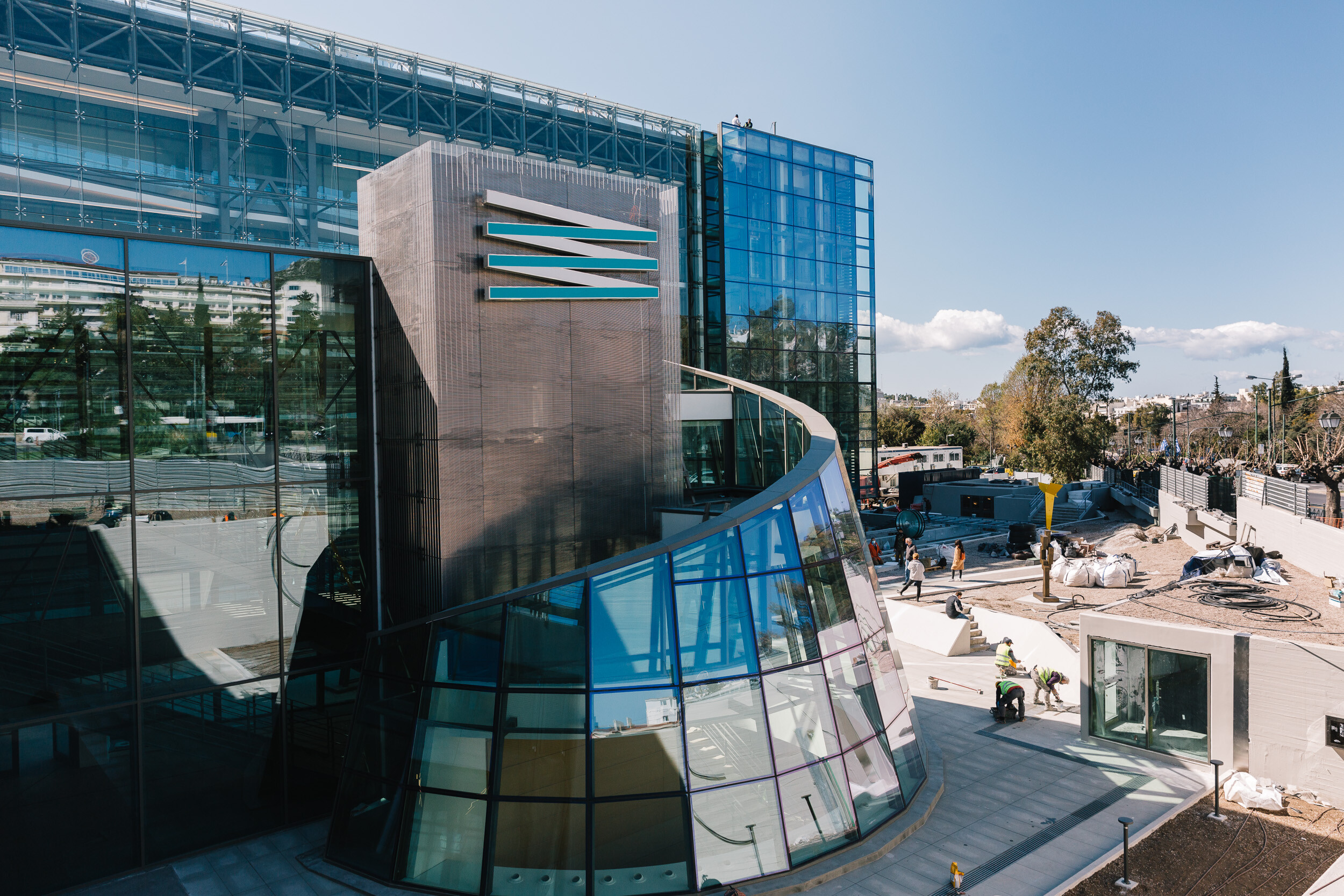By Socratis Santik Oglou,
The New National Gallery – the Alexandros Soutzos Museum, which adorns the center of Athens, next to the Hilton Hotel, on Vasileos Konstantinou Avenue, this year completes its 120th year open, as well as the first year that it is housed in its new, renewed building. The permanent exhibition of the Gallery consists of 1,000 paintings, while 20,000 works are stored in its warehouses. It is a really important achievement, because of the enlargement of the building, which in order to understand, I think it is fair to mention that the old permanent collection of the museum was at 400 projects. At the same time, the design of the New National Gallery, which is pioneering for Greece’s standards, highlights the architecture of the building in the urban environment of the center of Athens.
To begin with, regarding the building itself, I like its postmodern design quite a lot; especially the contrast that has been made created with its content, which mainly consists of works from previous centuries. This contrast gives it an interesting connotation. Moreover, its outer casing, which is full of glass, and the faint stairs that lead you to all the floors, remind me of Centre Pompidou in Paris.
The first work that you see, the moment you enter the building, is the large “Street Market” by Panagiotis Tetsis, for which a permanent and special place has been created in the reception area of the Gallery. The “Street Market” is an important artwork that, however, had not been exhibited before due to its big size, as it is a triptych with a length of more than 15 meters. At the same time, the position where the work is placed is pretentious and symbolic, because it wants to pass the message that just as a street-flee market is open to all, so is the New National Gallery.
The first element that attracts the attention is the use of wood in all parts of the reception (ticket office, information’s corner, dressing room, etc.). In addition, something equally impressive as Tetsis’ work at the entrance, is the lining with wood on the ceiling, where the pieces of wood are placed in an unexpected and impressive way that forms a composition of engraving axes that intersect the direction of the waters of the wood, thus giving a sense of movement to the space.

As for the exhibition spaces on the first floor, the first impression you get is that of the unexpected color of the walls, where the paintings are hanging, which is grey. Soaked in a bluish tone, one might say, it is a grey with a special behaviour, which brings out the works better than any pure white would do. Another special feature of the interior of the Gallery is that of the matte marble floors. This choice of material was perhaps made to give a more serious and modest air to the space. The exhibition panels, which are scattered, are an additional interesting element. They define axes in space and are placed permanently on the most common axes of gazes, thus offering interest and the sense of flow in the projectile and space. The frame of these panels, connected to the ceilings and floor, is a sturdy point in the space, and for this reason, large and heavy works are used to rely on them, such as “The portrait of Mrs. Klemans Serpieri” by Nikiforos Lytras.
The first work one sees in the exhibition, left on the wing on the subject of the Revolution, is the “Episode of the Greek Struggle” created in 1856 by Eugène Delacroix. This work is of the late period, which reveals how much it was still, even after years, to occupy European artists as a subject of the Greek Revolution. At the same time, the same “phenomenon” is observed in Greek painters. For example, the important work exhibited in the same exhibition, “After the destruction of Psara” by Nikolaos Gyzis, was created between 1896 and 1898.
Moreover, it is worth mentioning these two very important works in the section of the Struggle of ’21: The “Exodus of Messolonghi” by Theodoros Vryzakis, created in 1853, and the “Reception of Lord Byron in Messolonghi” of 1861, also drawn by the same artist.

Now, onto the third floor, the 20th & 21st Century Art, which is my favorite. The layout of the space, compared to that of the two previous floors, is certainly more “anarchic”, like all the modern and contemporary museums. Τhe general experience of the anarchic and unconventional of postmodern and abstract art are inviting the visitor to walk between the works and be part of the process and experience. In addition, on this floor, you will find artists such as: Chrysa, Nikos Hadjikyriakos-Gikas, Giannis Spyropoulos, Giannis Tahitis, Nikos Lytras, Konstantinos Maleas & Giannis Moralis. Yiannis Moralis was an important Greek visual artist and part of the movement “Generation of the ‘30s”, and quite a few of his artworks are exhibited in the gallery.
Nevertheless, as a visitor and observer, I would like to mention a few things that displeased me. Initially, I personally did not notice in the building that there is an elevator, which makes it difficult for people in a wheelchair or older people who cannot use the stairs anymore. And at the end of the day, is there a building anymore that does not have an elevator, while at the same time, its construction has already cost enough? Also, on the first two floors, the placement of the works seemed to be somewhat chaotic and disorganized, as if they wanted to present the plethora of the collection, even though the space is of specific dimensions and can accommodate on its walls a certain number of works. It gave me the impression that they were “not breathing” in the space and that each exhibit did not have adequate space for people to admire them.
To conclude, the New National Gallery is an important part of the field of culture in Greece, while at the same time, it could be compared with the corresponding museums of other European countries. This refreshment was certainly for good, since the works presented are clearly much more, but also the structure of the building from its monastery causes awe and contributes to the whole experience.
Moreover, I have to mention that the collections of the National Gallery are housed in two buildings. In the main building, visual works are exhibited, while in the National Glyptotheque (Goudi) the history of modern Greek sculpture is exhibited. Also, the gallery includes a café and restaurant located on the third floor and is accompanied by panoramic views across Athens. Apart from everything else, the museum has an amphitheater-conference center of 350 seats, and additionally, there is a library and a training event hall. The New National Gallery is open to the public all week, except Tuesday, from 10 AM to 6 PM.
References
- Μέσα στη νέα Εθνική Πινακοθήκη, lifo, Available here
- Εθνική Πινακοθήκη – Μουσείο Αλεξάνδρου Σούτσου – Παρουσίαση, nationalgallery, Available here




